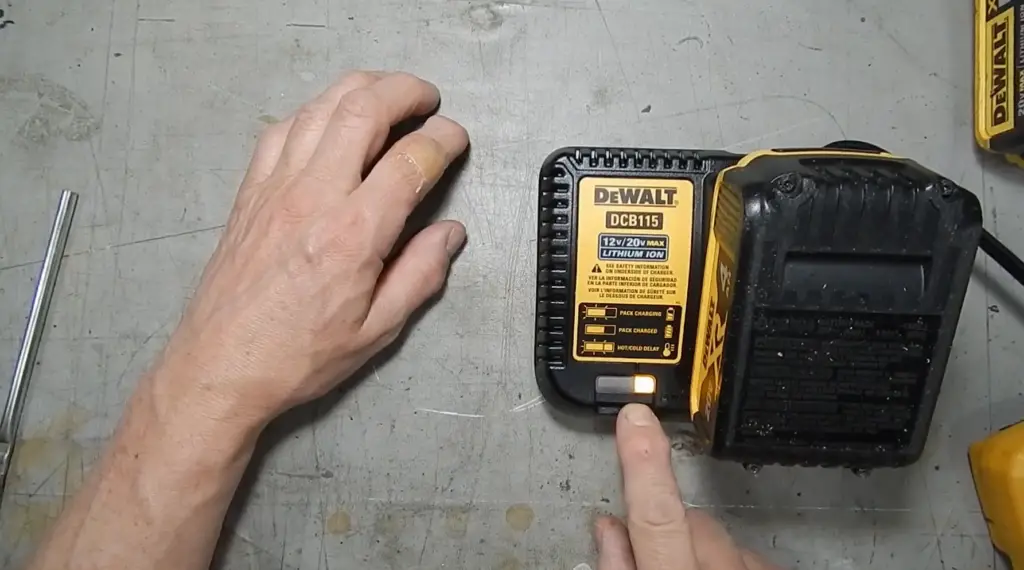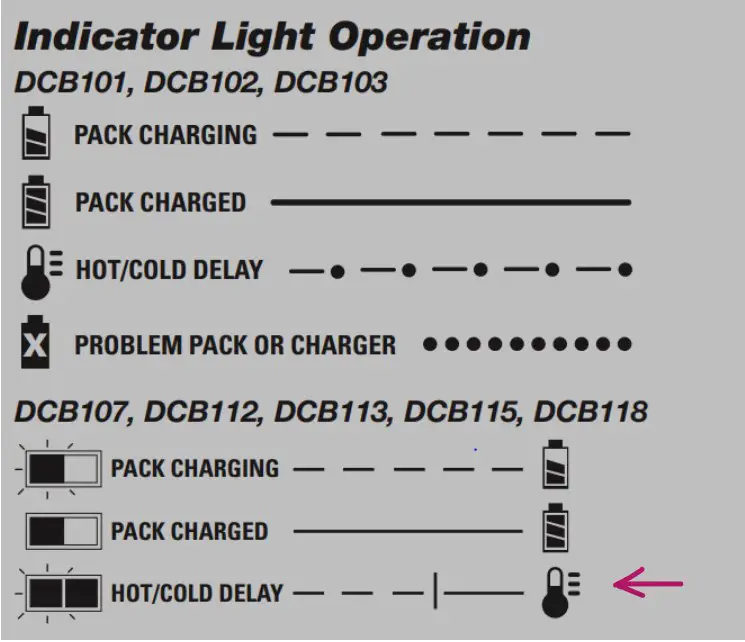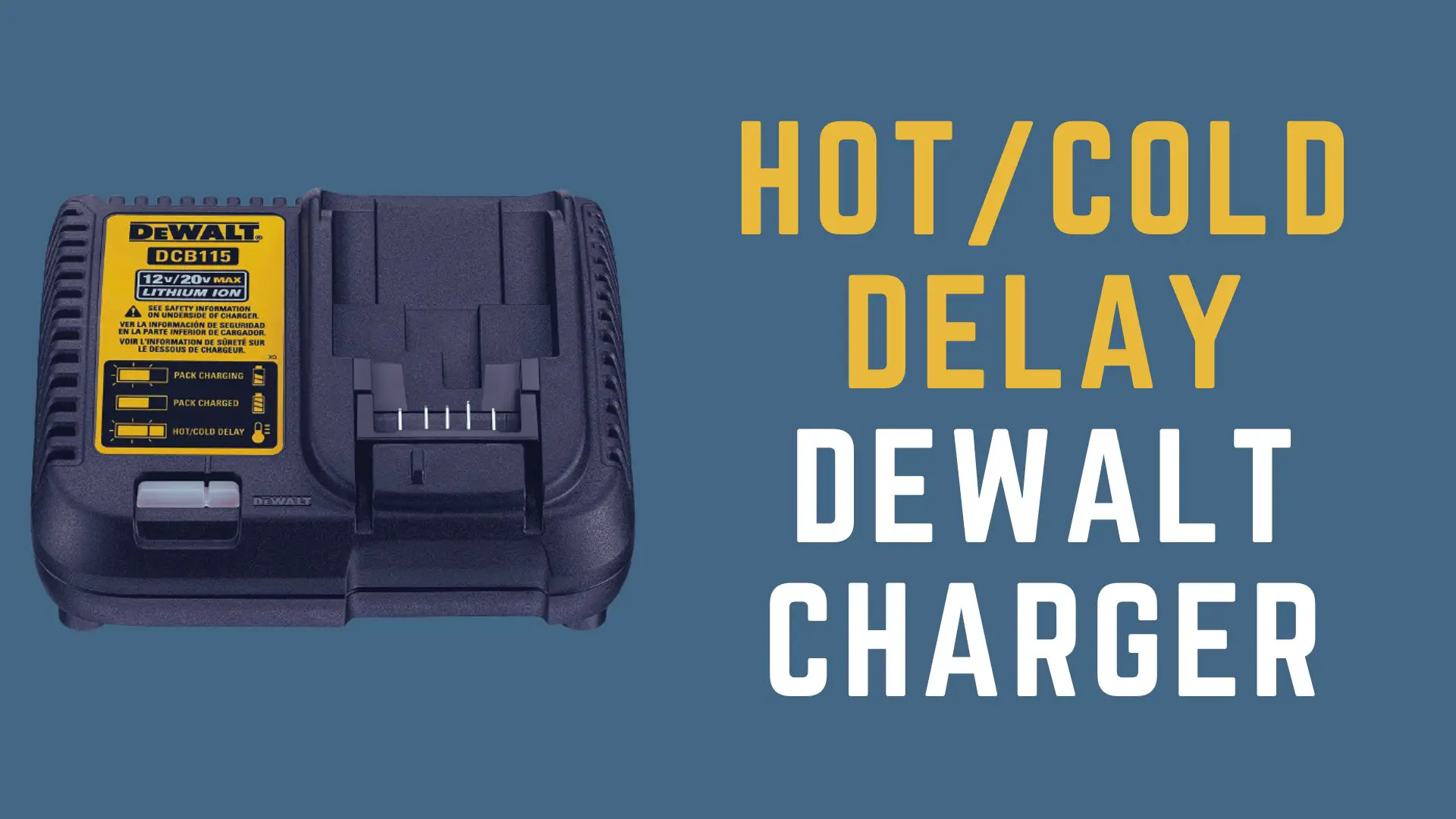Dewalt is an industry-leading power tool brand that has held the throne of reliability and durability for decades. From high-end tools to compact chargers, it manufactures every gear by utilizing innovative technology. From the whole catalog, the latest DeWalt charger is an outstanding example with hot or cold delay features.
If you worry about how a hot-cold delay on the DeWalt charger hinders the battery charging, don’t panic. It’s a default system integrated into DeWalt chargers to keep your battery safe and extend its life span. We will walk you through the real cause behind this issue and its quick fix that will relax your nerves in such an annoying situation.
Let’s jump into the details!
What is Hot Cold Delay on DeWalt Charger
The DeWalt charger indicates a hot/cold delay when your battery is too hot or too cold. Your battery automatically starts to hold the charge when its temperature becomes normal. Therefore, moderate your battery temperature to solve this issue.
What Do Hot and Cold Delay Mean?

The hot and cold delay of the DeWalt charger means the charger has an inbuilt feature that restricts charging a too-hot or too-cold battery. It’s a safety feature specially inculcated in the latest DeWalt chargers as the DCB series, including 107, 108, 112, 115, etc. This amazing feature provides you with the significant advantages of safety, reliability, and longevity.
The too-high and too low-temperature damage the battery if we charge it with adverse temperatures. Cold temperature affects the battery capacity by slowing the chemical reactions and weakening the battery. If you put the battery into a charger with too cold a temperature, it slows down the charging process and takes a long time to charge it fully than a normal battery.
Contrarily the hot temperature is considered the brutal killer for your overheated battery. It shortens the life span of your battery. Moreover, it is a great risk of short circuits, or explosion indulges if you put it on the charger at the same temperature.
The DeWalt is not only determined to deliver you the best-performing gears but also give value to your hard-earned money. Therefore, according to the prior unpleasant user experiences of damaged batteries due to adverse temperatures, DeWalt has incorporated the awesome safety feature of hot and cold delay in the latest catalog of DeWalt chargers.
What Does Dewalt Charger Lights Mean?

The DeWalt charger comes equipped with diagnostic light indicators that show the battery power status. To know the power status of your DeWalt battery, you should be well aware of these LED light indicators.
● Red (Blinking)
When you insert the battery into the charger, the charger indicates the battery is charging properly, and the red light blinks continuously.
● Red (Solid)
When the solid red light illuminates continuously, it indicates that the battery is fully charged and removed from the charger quickly to prevent overcharging and overheating.
● Red & Yellow
When you insert the discharged battery into the charger and the solid red and solid yellow light illuminate simultaneously, it indicates the hot and cold delay. It means your battery temperature is extremely hot and hot, and it’s unable to hold a charge. The charging starts automatically when your battery reaches the standard temperature range.
● Yellow (Blinking)
After insertion of the battery, if the yellow light blinks continuously, it indicates the problematic battery or charger. There might be any insertion issues or other problems with the battery. Therefore, sort out the problem and connect the charger again.
What If Your Battery Doesn’t Charge at All?
The hot and cold issue solves automatically when the battery contains a balance temperature range, neither too high nor too low. But what if your battery doesn’t charge at all? There might be some other reasons behind this issue. There might be some minor issues that you can solve by yourself in seconds.
On the other hand, there might be some major issues like a bad thermistor or damaged internal components and chips. You can solve these major issues as well if you have technical or electrical knowledge.
Otherwise, you should contact an expert technician or, in the case of a hand warranty, contact the DeWalt customer support services. Here are some quick solutions to fix the minor issues if your DeWalt battery is not charging properly.
1- Well-functioning Power Outlet
While plugging in the charger in the wall socket, make sure that the wall socket should be well functioning. It’s the first and foremost step you should take while connecting any electronic device. Maybe it’s the cause behind the malfunctioning of the battery or charger. Assess it and plug in the gears to other outlets.
2- Clean Dirty Terminal
Clean the terminals of the battery and charger to make them work well. Sometimes dust, debris, and corrosion accumulate on metal terminals due to prolong usage or not being used for extended periods. Clean the metal terminals with a Q-tip and rubbing alcohol or sandpaper.
3- Compatibility of Charger and Battery
Before inserting the battery into the charger, check out the compatibility of both the battery and charger. The charger should have the same voltage in accordance with battery capacity. Don’t insert the incompatible battery into the charger. It may cause damage to the metal terminal or plastic casing of the battery as well as the charger. That’s why don’t force the battery into the un-compatible charger.
4- Proper Insertion
After assessing the compatibility, be careful while inserting the battery into the charger. Fix it properly in the charger’s railing until you hear an audible click sound. If you don’t insert the battery properly, both gears’ metal terminals can’t connect, and the charger indicates charging issues.
5- Malfunctioning of Charger/Battery
If the battery is still not holding a charge, check out which is responsible for malfunctioning, either the charger or battery. To assess it, put in the other DeWalt battery to the charger. If the battery begins to charge, it means the charger is functioning properly and the battery is faulty. Contrarily, if the other battery doesn’t hold a charge, the charger is the culprit. It might be possible the other battery is also faulted. Although it’s an occasional situation that both batteries are dead and faulted. If the charger is at fault, you can charge the DeWalt battery without the charger as well.
6- Jump Start the Battery
Despite applying all strategies, if your battery still doesn’t hold, jump-start it using another DeWalt battery or car battery.
7- Keep the Temperature Moderate
If you face hot and cold delay issues, try to moderate its temperature. If the battery cools down, try to heat it, or if it’s too hot, decrease the overheating to the normal temperature range.
8- Repair the thermistor
The thermistor is a temperature-controlling component built into your DeWalt charger and battery. If it’s malfunctioning, the battery shows the extreme temperature without being too hot or too cold. Check the temperature of your battery; you can use a thermometer or temperature sensor. To check it, you have to tear out the external casing of the battery.
The thermistor is located along with the positive terminal of the battery and charger. Place the testers on the thermistor and analyze the temperature. If there is any issue, you can troubleshoot this issue by repairing or replacing the thermistor.
Pro Tip: To troubleshoot thermistor issues, you should have technical knowledge or practical experience. Otherwise, contact the expert technician.
How Should a DeWalt Battery Be Stored?
You should store the battery in a cool, dry place. If you want to save from the hassle of extreme temperature, save your battery at an appropriate place where the atmosphere is neither too hot nor too cold.
Don’t store or use the battery pack in extremely hot and cold locations where the temperature may reach or exceed 40 ˚C (104 ˚F). Additionally, keep your battery pack stays out of metallic objects. Don’t keep them in the toolbox and kits to prevent the exposed battery terminals from nails, screws, and keys.
Pro Tip: The recommended temperature to store the battery is neither below 22 ˚C nor high than 40 ˚C.
Electronic Protection System for Batteries
Electronic Protection System (EPS) is a processor-controlled system that is built into the DeWalt Batteries. This mechanical security system controls the internal mechanism of the DeWalt battery efficiently. It not only prevents the battery from overcharging and overheating but also extends the lifespan of the battery to its maximum. It usually controls the following operations of the battery:
1- Temperature
EPS manages the battery’s temperature while using the tool or charging in the charger. It helps to maintain the battery temperature to the standard level and prevent it from overheating during heavy-duty applications and working on larger workpieces.
2- Voltage
EPS controls the voltage of the DeWalt battery to increase and decrease from its required voltage rating. Usually, the cutdown value of each Lithium-ion battery cell is a nominal 3.0V and a maximum of 4.2V. When these voltages try to increase while charging and decrease while discharging, the battery shuts down due to fabulous EPS.
3- Current
EPS manages the battery output while using it in the tools and input current as well while charging it. The EPS keenly analyzes the tool requirement in which you are using the specific battery. It helps the battery deliver the required output, whether too low or too high. In this way, EPS saves the battery from overloading as well as overheating because both of these are the most hazardous and shorten the lifespan of your DeWalt battery.
Conclusion
After going through this detailed and precise guide, you will be able to understand what is a hot, cold delay on the DeWalt charger. You will also be well aware of the possible causes and solutions to this issue. We also elaborate on the complete internal and external mechanical operations of the battery and charger to educate you on how to manage them and fix them when they get out of order.

